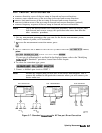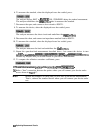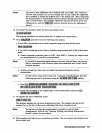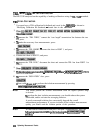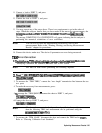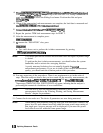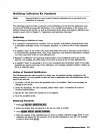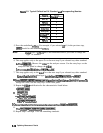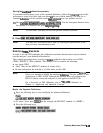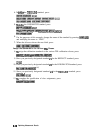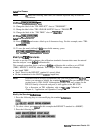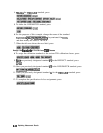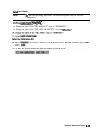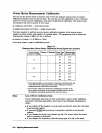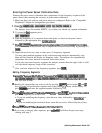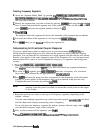
Saving the
modilkd
calibration constants
If you made modifications to any of the standard detlnitions, follow the
remaining
steps in this
procedure to assign a kit label, and store them
in
the non-volatile memory. The new set of
standard
dehnitions
will be available under
W$I$I&J&~,.
until
you save another user kit.
:...
/
13.
Press
(GJ
&$&~~~.
;#f#$&
~&@?$I&%~:,,
.,~~~.~~.~~
. Use the front panel knob to move
. . . . . . . . . . . . .
i
..:
..i........
i
I
i
. . . . . . . . . . . . . .
iii.;..
I
_
~
_
the pointer to a character and press
X&LI%?X
~XJ&f”F&.
. . . . .../..
//..
i
i..;
i
Note
To enter titles, you may also use the optional external keyboard.
Note
You may also save the user kit to disk, by selecting the particular kit at the
time you save a measurement result.
Modifying
!L’RL
Standards
In order to use the TRL technique, the calibration standards characteristics must be entered
into the analyzer’s user defined calibration kit.
This example procedure shows you how to
dellne
a calibration kit to utilize a set of TRL
(THRU, REFLECT, LINE) standards. This example TRL kit contains the following:
n
zero length THRU
n
“flush” short for the REFLECT standard (0 second offset)
n
50 ohm transmission line with 80 ps of offset delay for the LINE
Note
Hewlett-Packard strongly recommends that you read product note
851OSA
before you attempt to modify the standard
defmitions.
The part number of this
product note is 5091-3645E. Although the product note was written for the
HP 8510 family of network analyzers, it also applies to the HP 8753E.
For a discussion on TRL calibration, refer to
“TRIJLRM
Calibration” in
Chapter 6, “Application and Operation Concepts.”
Modify the Standard Definitions
Press the following keys to start modifying the standard definitions:
To select a short, press
@
@.
(In this example, the REFLECT standard is a SHORT.)
Press the following keys:
Optimizing Measurement Results
6-28



